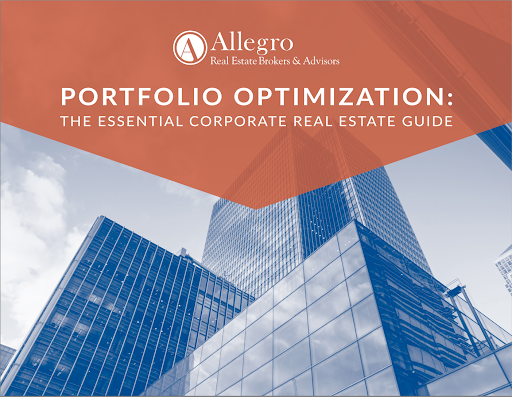Most of the time, flexibility offers advantages, and gives organizations the ability to adjust in real time to changing dynamics in the market. However, flexibility is not always a positive attribute, especially when it comes to short-term or flexible lease agreements.
A flexible lease, or short-term lease, allows tenants to move into a space for less than a full year. The duration of the agreement is mutually decided by both the landlord and the tenant, and can often be adjusted on a month-to-month basis.
Short-term leases became increasingly common during the COVID-19 pandemic as many companies adopted a short-term lease mindset. However, with the pandemic potentially waning, we advise organizations to once again focus on a long-term lease strategy. By doing so, they have the ability to proactively control their future real estate strategy and costs.
The 3 Main Disadvantages of a Flexible Lease Agreement
- Higher rent. In short-term lease agreements, higher rent typically compensates for the landlord’s higher risk factor. A shorter term also means that the landlord can increase rent each time the lease renews. This could be in one, three, six months—whatever timeframe the tenant and the landlord have agreed upon.
- Unexpected termination. Both tenants and landlords have the ability to terminate the lease quickly, which could leave tenants scrambling for a new space. This approach makes it incredibly difficult and nerve-wracking to plan on future stability. On the landlord’s end, they, too, would be left hustling to find a new tenant before losing income on the empty space
- The landlord can frequently change the terms of the agreement. In flexible lease agreements, tenants may have the chance to negotiate terms more often, but this also means landlords have the freedom to change their terms as well. If the landlord increases the rates beyond what is feasible for the tenant, you have two choices: look for another space, or find that money from elsewhere in the budget—which isn’t always an option.
Strategies to Create a Flexible Long-Term Lease Agreement
While short-term leases present a number of challenges, there are a few simple steps to settle on a flexible, long-term lease agreement that aligns with your organization’s overall corporate real estate strategy.
- Add an early termination clause. An early termination clause makes it possible for tenants to end their lease after or at a specified time in exchange for paying a predetermined fee. This fee typically compensates the landlord for unamortized lease-up costs, such as tenant improvements and brokerage commissions.
- Include sublet and assignment rights. In the event of relocating your business before your lease has ended, these rights allow tenants to sublease all or part of their space. This clause defines the restrictions and the landlord’s approval rights. And, it is ultimately better for the two parties to agree on what will be accepted and what will not, rather than omitting these rights altogether and relying on common law principles.
- Other flexibility rights. When it comes to negotiating a lease agreement that works best for your organization, there are a few other alternatives to a short-term lease agreement, including lease renewal options, right of first refusal, right of first offer, expansion, and contraction options.
Other Considerations
There are select instances, like during the COVID-19 pandemic, when a short-term lease makes the most sense for an organization. Rather than renewing another long-term lease, consider negotiating a short-term (one- to two-year) extension until your business and space plans can be clarified. A short-term lease gives tenants the ability to reassess their business needs in the near future. However, tenants should keep in mind that a shorter term may result in higher rent and more rigidity from the landlord.
While short-term lease agreements may seem like a better option to manage business now and in the future, disadvantages like higher rent and unexpected termination outweigh any perceived benefits. Instead, opt for a flexible, long-term lease agreement that aligns with your overall business strategy. This approach will allow you to dial in your plans, remove the possibility of any unexpected lease terminations, and place your organization in an overall better position.
Ready to speak with an Allegro team member?
We’d be happy to answer any questions you might have about the difference between short-term and long-term lease agreements. Contact us today for a free 30-minute consultation to see how our team can help you negotiate a flexible, long-term lease agreement that aligns with your strategic business objectives.







